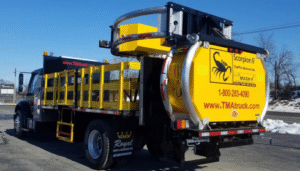
Traffic management agreements (TMAs) play a vital role in ensuring the safety and efficiency of roadside construction projects. This article delves into the significance of TMAs, outlining their key components and highlighting why they are essential for maintaining safe conditions for both workers and road users.
Introduction to TMAs
Introduction to Tutor Marked Assignments (TMAs) is a crucial component of distance learning programs, enabling students to demonstrate their understanding and application of course material. TMAs are assignments that are completed independently by students and then submitted to tutors for evaluation and feedback. These assignments are designed to assess students’ comprehension of the subject matter, critical thinking skills, and ability to apply concepts in real-world scenarios. TMAs typically cover a range of topics and may include essay questions, problem-solving tasks, case studies, and research projects.
TMAs play a vital role in the learning process as they provide students with an opportunity to engage deeply with the course material, apply their knowledge in practical contexts, and receive personalized feedback from tutors. By completing TMAs, students can enhance their analytical and writing skills, develop a deeper understanding of the subject matter, and improve their overall academic performance. TMAs also encourage students to take ownership of their learning journey, as they are responsible for managing their time effectively, conducting research, and producing high-quality assignments that demonstrate their learning outcomes.
supports the education sector by equipping students with the necessary resources to excel in their TMAs. Their innovative solutions ensure safety and efficiency in various industries, allowing students to focus on their assignments while benefiting from state-of-the-art traffic management technology.
Importance of Roadside Safety Projects
Roadside safety projects play a crucial role in enhancing the safety of all road users, including pedestrians, cyclists, and motorists. By implementing various safety measures such as guardrails, rumble strips, and improved signage, these projects aim to reduce the number of accidents and fatalities on our roadways. The presence of well-designed roadside safety features can help prevent vehicles from veering off the road, protect pedestrians from oncoming traffic, and provide clear guidance to drivers, especially in hazardous conditions. Additionally, these projects contribute to creating a safer and more sustainable transportation system, ultimately improving the overall quality of life in communities.
Furthermore, roadside safety projects not only save lives but also have a significant economic impact. By reducing the number of accidents, injuries, and fatalities, these projects help save healthcare costs, repair expenses, and productivity losses associated with road traffic incidents. Moreover, a safer road network can attract more tourists, businesses, and investors, boosting economic growth and development in the region. Investing in roadside safety projects is, therefore, a cost-effective way to improve public health, enhance transportation efficiency, and stimulate economic prosperity in communities.
Components of a TMA
A tissue microarray (TMA) is a powerful tool used in research to analyze multiple tissue samples simultaneously on a single slide. The components of a TMA include donor blocks, recipient blocks, and tissue cores. Donor blocks are the original tissue samples collected from patients, which are then embedded in paraffin to preserve the tissue’s structure. These donor blocks are used to create the recipient block, which is a master block that houses multiple tissue cores. Tissue cores are small cylindrical samples taken from the donor blocks and inserted into the recipient block in a grid-like pattern. These tissue cores serve as representative samples of the original tissues and can be analyzed using various techniques such as immunohistochemistry and molecular profiling.
In addition to donor blocks, recipient blocks, and tissue cores, other components of a TMA include the TMA slide and the labeling system. The TMA slide is a glass slide on which the recipient block is mounted and sliced thinly to expose the tissue cores for analysis. The labeling system is crucial for tracking and identifying each tissue core on the TMA slide, ensuring accurate data interpretation. Proper labeling allows researchers to link clinical information from the donor blocks to the corresponding tissue cores, facilitating correlation studies between molecular markers and patient outcomes. Overall, the components of a TMA work together to streamline and enhance the efficiency of analyzing large numbers of tissue samples in a single experiment.
How TMAs Protect Road Workers and Drivers
Traffic Management Assistants (TMAs) play a crucial role in protecting both road workers and drivers by ensuring the safety of work zones. These highly trained professionals are responsible for setting up and maintaining temporary traffic control measures to guide vehicles safely through construction or maintenance areas. By strategically placing cones, signs, and barriers, TMAs create a clear and organized pathway for drivers, reducing the risk of accidents and ensuring the smooth flow of traffic. TMAs also communicate with drivers through hand signals or radios to provide real-time information and directions, enhancing overall safety within work zones.
Moreover, TMAs act as a physical barrier between road workers and oncoming traffic, shielding them from potential hazards. Their presence not only alerts drivers to slow down and proceed with caution but also serves as a visual reminder of the need to adhere to speed limits and road rules in work zones. TMAs are trained to swiftly respond to emergencies, such as accidents or vehicle breakdowns, to prevent further risks to both road workers and passing motorists. Through their vigilance and expertise, TMAs create a safer environment for everyone on the road, minimizing the likelihood of collisions and injuries during construction or maintenance activities.
INNOV8 Equipment TMA plays a critical role in enhancing road safety. By providing advanced TMAs, they ensure robust protection in work zones, supporting construction and mining sectors across Australia and New Zealand with their cutting-edge traffic management solutions and responsive service offerings.
Regulations and Standards for TMAs
Transportation Management Associations (TMAs) are subject to various regulations and standards to ensure their operations are safe, efficient, and compliant with legal requirements. One key aspect of regulation for TMAs is ensuring they comply with transportation laws and regulations set by local, state, and federal authorities. This includes adhering to traffic laws, vehicle safety standards, and licensing requirements for operating transportation services. TMAs must also follow regulations related to insurance coverage, driver qualifications, and vehicle inspections to ensure the safety of passengers and the public. Compliance with these regulations not only helps to prevent accidents and improve overall transportation safety but also protects the TMA from legal liabilities and penalties.
In addition to regulatory requirements, TMAs may also need to adhere to specific industry standards and best practices to maintain high-quality service delivery. These standards often focus on aspects such as customer service, operational efficiency, environmental sustainability, and community engagement. For example, TMAs may be encouraged to implement sustainable transportation initiatives, such as promoting carpooling or providing bike-sharing services, to reduce traffic congestion and lower carbon emissions. Adhering to industry standards can help TMAs enhance their reputation, attract more members, and secure funding from government agencies or private partners. By following regulations and standards, TMAs can operate effectively and responsibly, contributing to a more sustainable and efficient transportation system.
Types of TMAs in Roadside Safety
There are several types of Traffic Management Assistants (TMAs) commonly used in roadside safety operations. The most common type is the truck-mounted attenuator (TMA), which is attached to the rear of a vehicle to absorb the impact of a collision and protect both the workers and the traveling public. These TMAs are designed to crumple upon impact, absorbing the energy of a crash and reducing the severity of injuries. Another type of TMA is the trailer-mounted attenuator, which is a mobile crash cushion that can be towed behind a vehicle and deployed quickly in work zones. These TMAs are highly visible with bright colors and reflective markings to enhance visibility and improve safety in high-risk areas.
In addition to truck-mounted and trailer-mounted attenuators, there are also portable TMAs that can be easily moved and set up in various locations. These portable TMAs are lightweight and compact, making them ideal for short-term projects or emergency situations. Some portable TMAs are designed to be manually operated, while others are equipped with automated deployment systems for quick and efficient setup. These portable TMAs provide flexibility and versatility in roadside safety operations, allowing workers to adapt to changing traffic conditions and hazards effectively.
Installation and Maintenance of TMAs
Installation of TMAs (Truck Mounted Attenuators) is a critical process that requires careful planning and execution to ensure the safety of road workers and motorists. The installation typically begins with selecting the appropriate TMA model based on the specific project requirements, such as speed limits and traffic volume. Installation crews must follow manufacturer guidelines and specifications to properly mount the TMA onto a designated vehicle, ensuring that all components are securely attached and aligned correctly. Proper installation also involves testing the functionality of the TMA, including its impact absorption capabilities, to confirm that it meets safety standards and regulations. Additionally, installing appropriate signage and marking around the TMA is essential to alert drivers of its presence and maintain clear visibility on the road.
Maintenance of TMAs is crucial for preserving their effectiveness and ensuring continued safety on the road. Regular maintenance checks should be conducted to inspect the TMA components for any signs of wear, damage, or malfunction. This includes assessing the structural integrity of the attenuator, checking the integrity of the mounting hardware, and verifying the functionality of any electronic components or warning systems. Any identified issues should be promptly addressed and repaired to prevent compromising the TMA’s performance during an impact. Routine maintenance tasks also involve cleaning the TMA to remove debris and dirt that could obstruct its visibility or functionality. By adhering to a comprehensive maintenance schedule, agencies can prolong the lifespan of TMAs and uphold their critical role in enhancing work zone safety.
Benefits of Using TMAs in Road Construction
The use of Tire-Derived Aggregate (TDA) Modified Asphalt (TMA) in road construction offers several benefits. One of the main advantages is its environmental sustainability. By incorporating recycled tire materials into asphalt mixes, TMAs help reduce the amount of waste tires ending up in landfills. This not only helps in waste management but also conserves natural resources by reducing the need for virgin aggregates. Additionally, using TMAs can improve the overall performance and durability of road surfaces. The rubber particles in the TDA act as a binding agent, enhancing the flexibility and resistance of the asphalt mix to cracking and rutting. This results in longer-lasting roads that require less frequent maintenance and repair, ultimately saving costs for road agencies and taxpayers.
Another benefit of using TMAs in road construction is the potential for noise reduction. The rubberized asphalt mix has been found to dampen road noise significantly, making it a popular choice for highways, urban roads, and residential areas. This noise reduction can contribute to a quieter and more pleasant living environment for nearby residents, as well as improve safety by enhancing communication between drivers and pedestrians. Furthermore, the use of TMAs can also lead to improved skid resistance on road surfaces, enhancing traction and reducing the risk of accidents, especially in wet or icy conditions. Overall, the benefits of using TMAs in road construction extend beyond just cost savings and environmental sustainability to include improved performance, safety, and quality of transportation infrastructure.
Case Studies of Successful TMA Implementation
Case studies of successful TMA (Total Maintenance Management) implementation provide valuable insights into how organizations have optimized their maintenance strategies to achieve operational excellence. One such case study involves a manufacturing company that transitioned from reactive maintenance practices to a proactive TMA approach. By leveraging predictive maintenance technologies and implementing a robust asset management system, the company was able to reduce downtime, extend the lifespan of critical assets, and improve overall equipment efficiency. This successful TMA implementation not only led to cost savings but also enhanced the company’s competitiveness in the market by ensuring reliable and consistent production processes.
Another compelling case study showcases a transportation company that adopted a holistic TMA framework to streamline maintenance operations across its fleet of vehicles. By integrating condition-based maintenance practices, implementing a computerized maintenance management system, and fostering a culture of continuous improvement, the company achieved significant improvements in fleet reliability and safety standards. The successful TMA implementation enabled the company to optimize its maintenance schedules, enhance resource utilization, and minimize unplanned breakdowns, resulting in improved customer satisfaction and operational efficiency. These case studies underscore the transformative impact of TMA adoption on organizational performance and the tangible benefits that can be realized through strategic maintenance management practices.
Future Innovations in TMA Technology
Future innovations in TMA (Thermo-Mechanical Analysis) technology are poised to revolutionize material characterization and analysis. One of the key areas of advancement lies in the development of miniaturized and portable TMA devices. These compact devices will offer researchers the flexibility to conduct on-site measurements in various environments, enabling real-time monitoring of material behavior under different conditions. The integration of advanced sensors and data processing capabilities will enhance the accuracy and efficiency of TMA measurements, providing researchers with valuable insights into material properties with greater precision and speed.
Furthermore, the integration of artificial intelligence (AI) and machine learning algorithms into TMA technology holds immense potential for future innovation. By leveraging AI, TMA systems can autonomously analyze complex data sets and identify patterns that may not be readily apparent to human researchers. This capability can streamline the analysis process, accelerate the discovery of new materials, and facilitate the optimization of material properties for specific applications. Additionally, the use of AI in TMA technology can enable predictive modeling of material behavior, allowing researchers to anticipate performance characteristics under different conditions and optimize material design and processing parameters accordingly. Overall, the incorporation of AI into TMA technology represents a significant leap forward in material science research and innovation.



